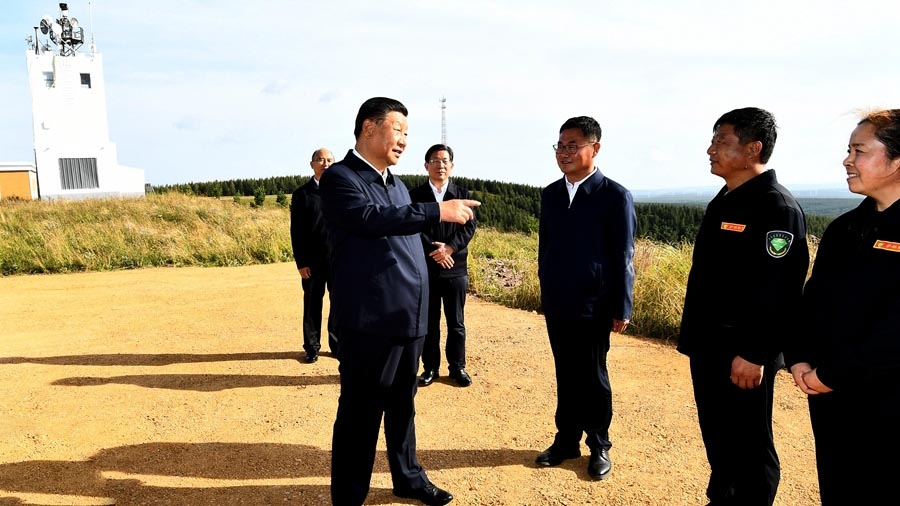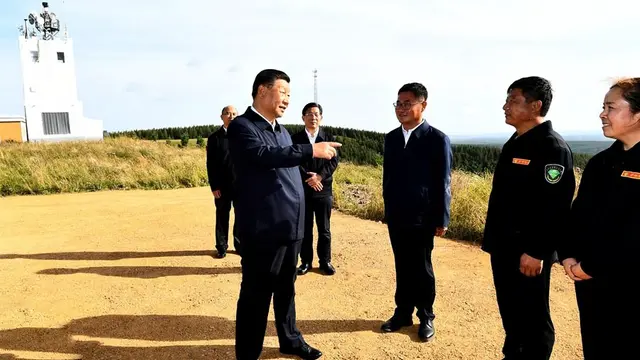03:50

On Monday, Chinese President Xi Jinping visited Saihanba, a site in north China's Hebei Province known for its successful afforestation efforts. It is one of the largest man-made forests in the world. Now with a barrier spanning 750 square kilometers, it is what locals call a green miracle. That's because nearly half a century ago, the area was a barren wasteland.
"Saihanba" is a combination of Chinese and Mongolian. It means "beautiful highlands."
Once a royal retreat, the region turned into a desert by the end of the Qing Dynasty,mainly due to deforestation, forest fires, and constant warfare in the region. It was not until five decades ago that things started changing for the better. The forest coverage rate has increased from 10 percent in the 1960s to 80 percent today.
Experts say this sea of green is saving the Chinese capital from desertification. But from a single tree to a forest, how did this miracle happen? The answer lies in the Saihanba spirit.
In the 1960s, the first generation of foresters came here to start a farm, and the generations who have followed in their footsteps are here to protect it. Take this watchtower, for example. It's one of nine watchtowers in the forest. It's up to watchkeepers like Liu Jun to observe the woods for fire signs.
Liu told CGTN that his job is to watch the forest closely and give reports every 15 minutes during the day and every other hour at night.
The biggest challenge is the frigid weather as temperature at the area could drop to below -40 degrees Celcius in winter. And loneliness is another challenge.
It is the foresters' unremitting efforts that have turned the once barren land into a wonderland. The foresters did not come here for honor or praise, but out of responsibility. And they chose to stay. As an old Chinese saying goes,
"One sows and another reaps."
President Xi said Saihanba has become a symbol of the Chinese spirit of hard work, and a vivid example of ecological protection.
When talking to the foresters, President Xi said China needs to promote this kind of spirit so as to better develop the country and the green economy. He called on the people of Saihanba to redouble their efforts and carry forward reforestation.
From Qinghai Lake to Nyingchi, from Wuyi Mountain to Saihanba, one major theme in President Xi's inspection tours this year is eco-protection. This shows China is fully committed to advancing a green, low-carbon economy.
In February, China released guidelines calling for more efforts to accelerate the green upgrading of infrastructure, promote green technology and improve relevant laws and regulations. In June, more guidelines were issued, urging efforts to grow more trees and grass to improve ecosystem stability. The country has set the target of peaking carbon emissions at around 2030 and realizing carbon neutrality by 2060.
Like President Xi has said, lucid waters and lush mountains are invaluable assets. China is now focusing on this development approach. It has bid farewell to the old ways of economic expansion, which severely harmed the environment. Instead, it now emphasizes high-quality development to protect our Earth for future generations.
 简体中文
简体中文



